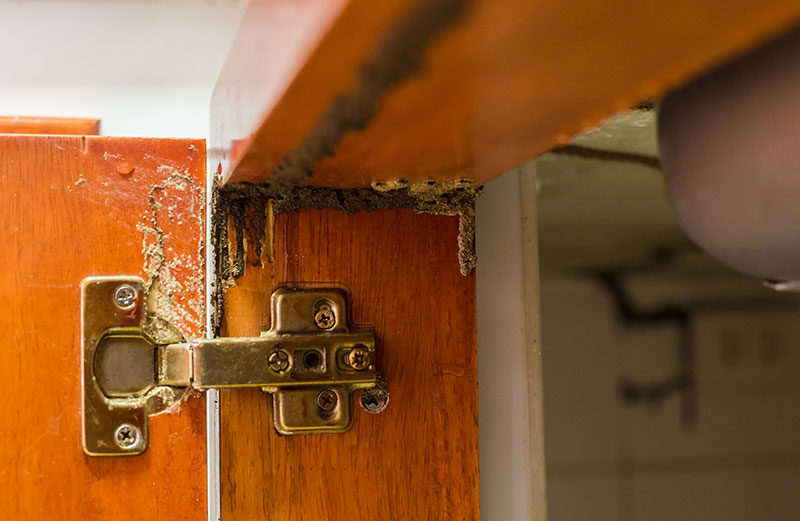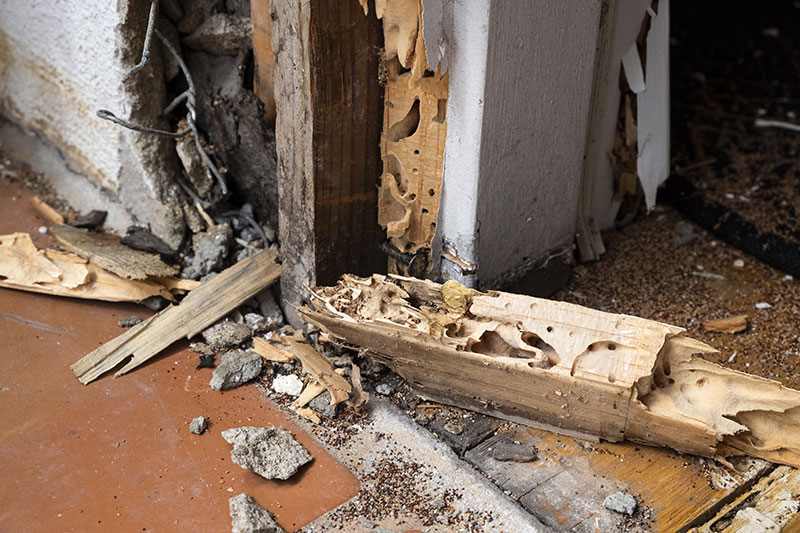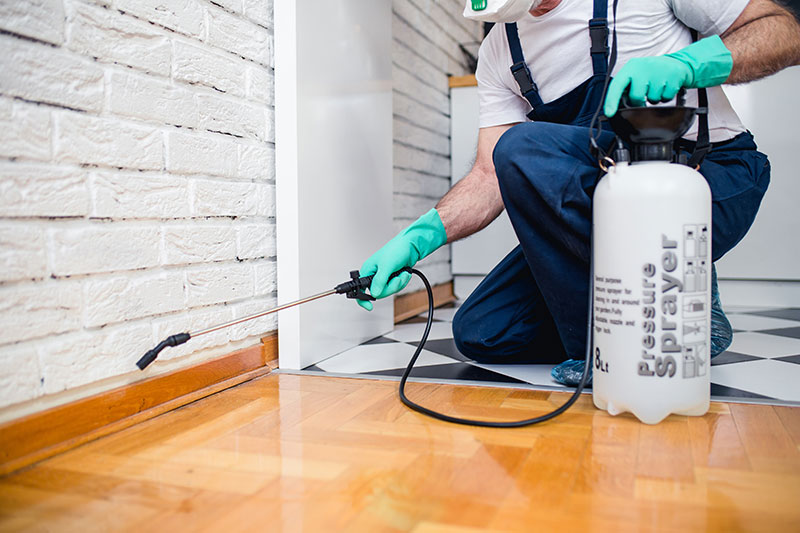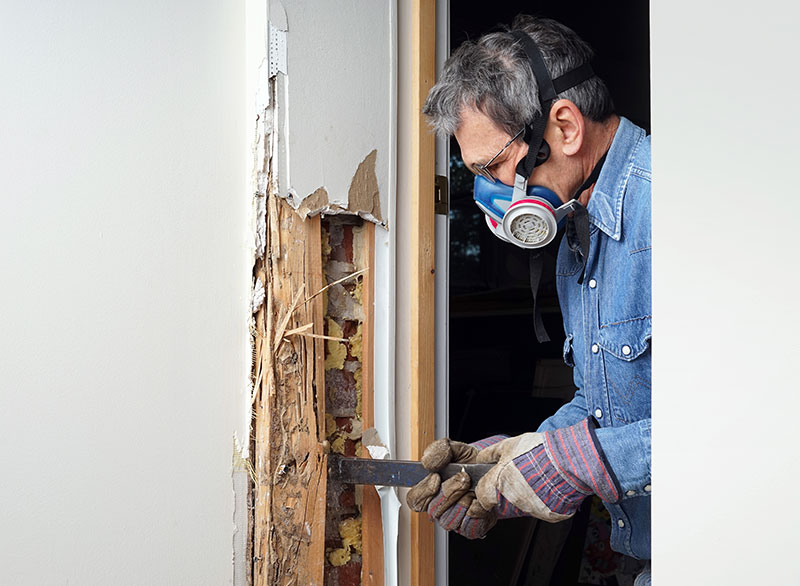Advertisement
While termites don’t cause direct harm to humans, unlike mosquitoes and bees, they can still wreak havoc on your home. This is particularly true when you ignore the early signs of an infestation problem. It’s only later that you regret and realize that it’s too late for minor fixes—you’re going to need a major intervention to remove all signs of the pest.
Termite infestation can elevate your stress levels by affecting your finances, especially with the repair costs. Worse, it can damage your property so severely that your home’s structure could become unsafe for occupancy, which can be detrimental to you and your household.
With this in mind, you should do all that you can to prevent and eliminate the infestation, like hiring professionals for termite treatment. Before you can do that, though, you should be aware of the different types of termites, the things that attract them, and signs that they’ve infiltrated your home.
Types of termites

There are approximately 2,750 termite species. While they are mostly found in tropical rainforests globally, many of them have been unwittingly transported by humans via their belongings. This is why homes and buildings end up developing infestations. (1)
The most common termite species in residential and commercial properties can be categorized into three groups based on where they like to live:
- Damp wood
Fallen logs in your backyard, wet firewood in your fireplace, and beams in a leaky attic can become habitats for termites. Pests living in these areas are typically above ground, which makes them more challenging to spot. Nonetheless, to avoid infestation, you should remove any damp furniture or fixtures as a precaution.
- Dry wood
Doors, wooden window frames, and furniture can be home to dry wood termites. These pests will infest these fixtures regardless of the latter’s condition, whether they’re healthy or decaying.
Moreover, since they’re in a dry area, this type of termite has become proficient at reabsorbing water from its feces. This way, they can live longer in the fixture without drying out.
- Subterranean
Subterranean termites thrive underground. They build their nests below ground and search for food above the soil by creating mud tubes within the wood. This makes them the most dangerous type since they can easily make the foundation and other parts of a structure brittle. If you spot this kind of termite in your home or building, you need to contact pest control professionals immediately.
Things that attract termites
Termites get their sustenance from cellulose, which is an organic fiber that’s typically present in wood and plants. To be clear, these pests don’t actually digest wood. Rather, they have microorganisms, called protozoa, in their digestive system that provide enzymes for the creatures to convert wood cellulose into simple sugars. (2)
Aside from these materials, termites can also feed on paper, plastic, and even drywall. Unfortunately, these are found in most homes, which is why these creatures are common household pests.
To prevent termite infestation, you should be mindful of these materials in your home:
- Wood
Of course, it goes without saying that any wood component in your residence, whether in furniture or the structure itself, would attract termites. After all, it serves as their primary food source.
Firewood and woodpiles can draw these pests, and they can hop from one log to another. If they happen to target your house’s structural elements, then you’re in for a lot of trouble since they can damage the inside of the foundational pillars severely.
If you really need to stack wood on your property, keep it at least 20 feet away from your house. Additionally, it should be elevated at least five inches above the ground.
- Foliage
On top of the wood, leaves can also bring in a colony of termites since they also contain cellulose. These fibers strengthen plants’ stems, branches, and leaves, but, as mentioned above, they’re considered food by termites as well.
To avoid these pests from infiltrating your home, ensure that you clear away dead trees, stumps, and fallen leaves. Additionally, watch out for tree branches and leaves that touch the roof of your home, as these can serve as pathways for these bugs.
- Clogged Gutters
You should clear your gutters during summertime so that, when the rainy season comes, water flows with ease down the pipes and away from your home. Having clogged gutters through the buildup of leaves and twigs can generate excess and stagnant moisture, which can hasten the rotting of your roof. In turn, this can provide opportunities for termites to enter your abode.
Signs of termite infestation

As mentioned above, there are different types of termites, and they can invade your home through damp and dry wood as well as through the ones below ground. As such, it can be easy to fall into the trap of thinking that your property is safe from these critters.
However, you should keep an eye out for telltale signs that your home has been infested, such as:
- Termite wings
Termite wings are one of the things that exterminators look for during inspections. While these creatures usually hide underground or behind walls, you can still lookout for this unmistakable sign, especially after a termite swarm. This event occurs during their reproduction cycle, where they get together, but some shed their wings and die off in the process.
Since a termite swarm is proof of mating, finding termite wings in your home is a sure sign that there’s a thriving colony somewhere on your property.
- Mud tubes
Another unmistakable sign of termite infestation is mud tubes. These are tiny mud tunnels that are created by these pests to travel through exposed spaces.
For instance, since they can’t munch their way through concrete, they can create these pathways over or under the fixture. Plus, since they get dehydrated rapidly, they use these tubes to maintain moisture while they travel back and forth from their colony and a food source. (3)
- Droppings
Termite droppings are also known as frass. Their appearance resembles wood particles or sawdust. If you find pellet-shaped waste from an indiscernible source anywhere in your home, you may well have an infestation.
- Structural damage
Damaged wood, like holes within the material, confirms that there are termites in your property. If you notice these openings in your pillars or walls, you should contact professional exterminators immediately since those structures may well already be brittle. If the damage is bad enough, they could collapse at any time.
Things to do to prevent termites

Now that you’re aware of what to look for, you should also be aware of practices that can help you keep termites away from your property, such as:
- Making sure no wood connects with the ground
Whether it’s a woodpile that you’ll be using for your fireplace or the foundations of your home, you should ensure that any wood component wouldn’t touch any soil. When you allow the wood to have direct contact with the ground, you’re opening up food and moisture sources for termites. Additionally, it can also serve as shelter and hidden entry for these creatures.
Wood siding, frames, and doors should be elevated at least six inches above the ground. Take note of posts and stairs as well since, most of the time, they extend all the way to the soil. Even if they’re embedded in concrete, termites can still create pathways over or around the material to reach their food source.
- Keeping moisture away from your home
Moisture is a termite’s best friend. You should strive to eliminate humidity in your abode as much as possible. For your bedroom and living space, you can invest in a dehumidifier to reduce the amount of water in the air.
Here are some things that you can do to keep water away from your residence:
- Maintain your gutter system – As stated earlier, your gutter system shouldn’t be clogged so that water can flow without any interruption. Rain and other fluids should be directed away from the property through downspouts and splash blocks. The ground beside the foundation must be sloped or graded so that it drains water away from the building.
- Map out your irrigation system – You should also consider the position of your lawn sprinklers. Determine their reach so that you won’t have to worry about your walls or doors getting wet even when using the maximum sprinkling setting. Make sure that there’s minimal to zero water that puddles near the foundation as well when you turn your irrigation system on.
- Repair leaks – Take heed of any leaks that you have in your home. You should make sure to fix them right away once it’s sunny to avoid creating opportunities for termites. Inspect basements and other dingy corners regularly as well since they’re often overlooked, but they are the ideal entryways for these pests.
- Treating wood components
Borate is a renowned chemical that can repel termites. Spray it on wood before priming and painting the material as protection. Borate treatment is effective for keeping these pests from munching on your furniture or structural fixtures for decades.
Conclusion
A termite infestation can have adverse impacts on your physical and mental health. It can also damage your finances, either from the repairs that you’ll need or the cost of hiring an exterminator. Fortunately, there are things that you can do to keep them away from your property. Follow these tips to maintain the beauty of your property inside and out.
References:
- “Termite”, Source: https://www.britannica.com/animal/termite
- “How Do Termites Digest Wood?”, Source: https://sciencing.com/how-do-termites-digest-wood-13406469.html
- “How to get rid of termites: Termite treatments, signs to know”, Source: https://www.today.com/home/how-get-rid-termites-termite-treatments-signs-know-t140889

